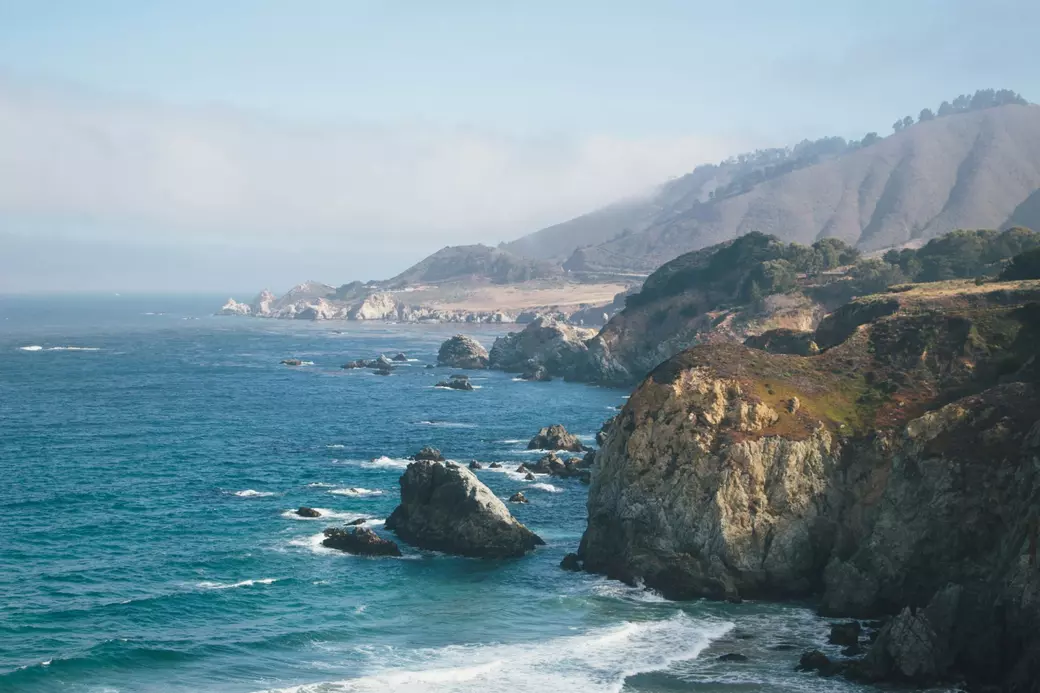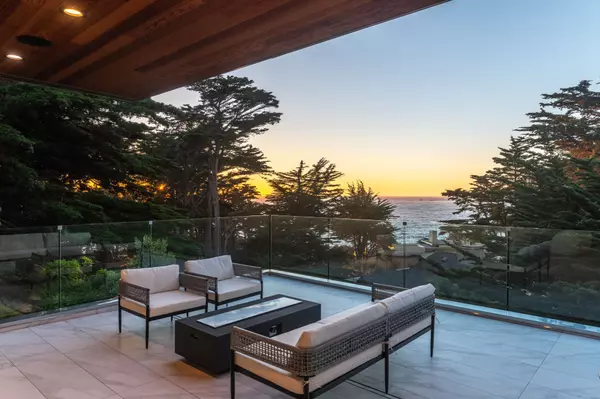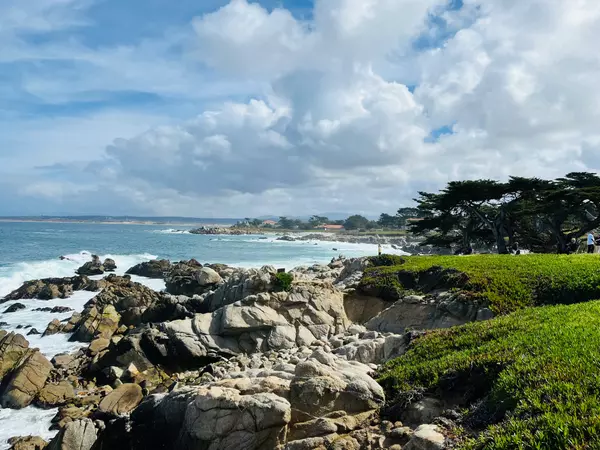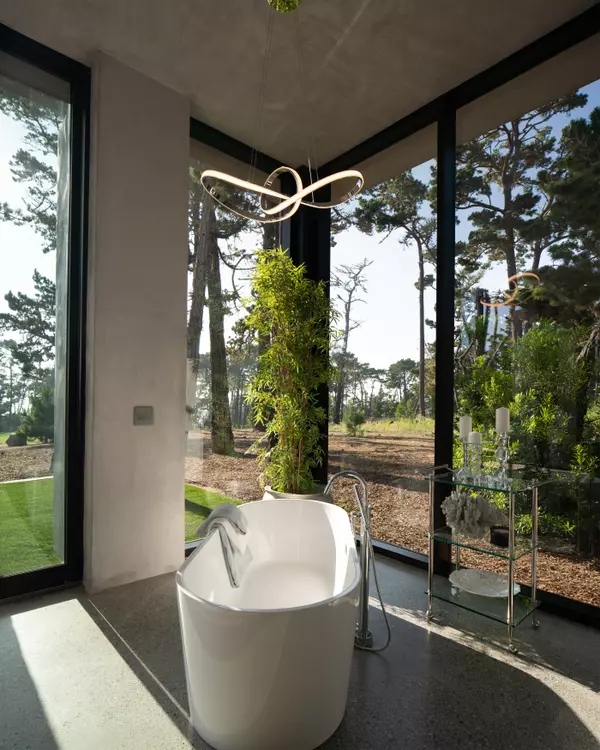Nine Worlds: Understanding the Microclimates of the Monterey Peninsula

Nine Worlds: Understanding the Microclimates of the Monterey Peninsula
If you’ve ever driven from downtown Monterey toward Carmel Valley, you’ve probably witnessed one of California’s most curious natural tricks: the fog rolls off the Bay like a living thing, swallowing Cannery Row in soft gray, only to dissolve (10 minutes later!) into dry, honeyed light somewhere past Highway 68. Windows down, sweater off, sunglasses on. In that short stretch of road, you’ve traveled from one world to another.
Locals will tell you: the Monterey Peninsula isn’t one climate—it’s more like nine. Each community has its own weather patterns, its own light, its own rhythm of fog, wind, and sun. For buyers and travelers alike, understanding these microclimates isn’t just about knowing whether to pack a jacket (though that’s wise). It’s about learning how the weather shapes daily life, home maintenance, and the experience of living here.
Below, we’ll take you through each of the Peninsula’s nine worlds, from the misty mornings of Pacific Grove to the golden calm of Carmel Valley, and offer insight into what to expect in each.
Monterey: The Classic Coastal Mix
Average Temperatures:
-
Summer highs: 65–70°F
-
Winter highs: 58–62°F
-
Morning fog, afternoon sun (sometimes), brisk evening winds
Monterey proper is the Peninsula’s atmospheric heart. Days begin cool and silver, with a marine layer hugging the coastline until midmorning. By early afternoon, the fog often gives way to sun-dappled warmth. But the sea breeze never leaves for long. Locals keep layers in their car year-round.
Living here means balance. Homes close to Monterey Bay require vigilant maintenance: salty air can corrode metal fixtures and outdoor furniture surprisingly fast. A good coat of marine-grade paint and regular window washing make a big difference.
For buyers, think of Monterey’s climate as ideal if you love the sound of the ocean, the smell of brine, and the ritual of slipping into a sweater after sunset. It’s comfortable, consistent, and deeply tied to the rhythms of the sea.
Pacific Grove: The Fog-Lover’s Haven
Average Temperatures:
-
Summer highs: 60–65°F
-
Winter highs: 57–62°F
-
Foggiest town on the Peninsula
Nicknamed “Butterfly Town, U.S.A.” for its annual monarch migration, Pacific Grove feels like it exists within its own soft cocoon of fog. Mornings here are misty and romantic, with sunlight filtering through eucalyptus groves in patches.
Homeowners often fall in love with this gentle gray. But they learn quickly that fog brings moisture, and moisture brings upkeep. Wooden shingles need regular sealing, and lawns may stay damp even in July. Still, this weather preserves Pacific Grove’s distinct atmosphere: moody, nostalgic, and ideal for those who prefer cool mornings and coastal quiet.
For travelers, this is cardigan country. Bring your coziest layers and enjoy the ocean trails in their most ethereal form.
Pebble Beach: Where the Fog Meets the Forest
Average Temperatures:
-
Summer highs: 60–68°F
-
Winter highs: 55–62°F
-
Variable fog and filtered sun, depending on location
Drive through the Del Monte Forest and you’ll notice something strange: one street might be completely clear, the next shrouded in mist. That’s Pebble Beach’s microclimate magic.
The proximity to the coast keeps it cool, but the tall pines create natural windbreaks and patches of calm. Homes nearer the ocean see heavier fog and salt exposure, while those tucked inland enjoy drier air and more sunshine.
From a maintenance perspective, moisture management is key here. Gutters, decks, and roofs need attention, especially beneath the forest canopy. But for many, the payoff—filtered sunlight through towering cypress, deer in the yard, ocean scent on the breeze—is worth every bit of upkeep.
Carmel-by-the-Sea: The Storybook Balance
Average Temperatures:
-
Summer highs: 65–70°F
-
Winter highs: 58–62°F
-
Foggy mornings, clear afternoons
Carmel’s weather feels like Monterey’s gentler cousin. The mornings often begin gray, but by midday, the village glows golden under high sun. Ocean breezes cool the afternoons, and evenings settle into a crisp calm perfect for walking to dinner or lighting a fire.
Here, homeowners enjoy the sweet spot of the Peninsula: mild humidity, moderate temperatures, and minimal extremes. That said, the sea air still demands attention. Salt can dull windows and metalwork, and the combination of moisture and old-growth trees means keeping an eye out for moss or mildew on shaded exteriors.
For visitors, Carmel weather is tailor-made for wandering: light sweater, scarf, sunglasses in your bag. For buyers, it offers the best of both worlds: proximity to the coast with just enough sunshine to keep gardens lush.
Carmel Valley: The Golden Retreat
Average Temperatures:
-
Summer highs: 80–95°F
-
Winter highs: 65–70°F
-
Sunniest, driest area on the Peninsula
Head inland on Carmel Valley Road and you’ll feel it: the temperature rising by the minute. The fog fades, replaced by dry warmth and vivid blue skies. The Valley has the Peninsula’s most stable climate, ideal for vineyards, olive trees, and long afternoons outdoors.
Home maintenance here looks different. Instead of salt corrosion, owners deal with sun exposure and occasional drought. Roof materials and landscaping choices make a big difference. Tile roofs, drought-tolerant plants, and good irrigation systems help preserve both aesthetics and property value.
Buyers drawn to Carmel Valley often love that sense of separation. It's just far enough from the coast to bask in sunlight, yet close enough to reach the ocean in under half an hour.
Seaside: Breezy and Bright
Average Temperatures:
-
Summer highs: 65–75°F
-
Winter highs: 58–63°F
-
Coastal winds, fog at night
Once a modest military town, Seaside is now one of the Peninsula’s most dynamic communities, and its climate plays a big role in that livability. It’s typically sunnier than Monterey or Pacific Grove, with just enough ocean influence to stay cool.
The wind picks up in the afternoons, so homeowners tend to invest in sturdy outdoor furniture and solid fencing. For new builds, wind-resistant materials and good insulation are wise.
Buyers who love light and affordability often find Seaside a great fit. The weather encourages activity. Morning jogs, dog walks, and beach trips feel effortless here.
Marina: Coastal Sunshine and Sea Breeze
Average Temperatures:
-
Summer highs: 68–75°F
-
Winter highs: 60–65°F
-
Frequent winds, low fog inland
Marina feels like California in miniature: dunes, ocean, wind, and a young, energetic community. It shares Seaside’s coastal currents but leans a touch sunnier, especially inland.
Salt exposure is real here, so stainless steel fixtures and weatherproof paints go a long way. On the plus side, wind keeps the air fresh, and the pink sunsets are among the best anywhere on the coast.
For travelers, a windbreaker is your best friend. For buyers, Marina offers coastal living without the chill of Pacific Grove or the luxury markup of Pebble Beach.
Highway 68 Corridor: The Temperate Middle Ground
Average Temperatures:
-
Summer highs: 75–85°F
-
Winter highs: 60–68°F
-
Mild sun, low fog, light wind
Stretching between Monterey and Salinas, this corridor enjoys what many locals call “the perfect compromise.” It’s less foggy than the coast, cooler than Carmel Valley, and typically dry year-round.
Homes here benefit from gentle conditions, less corrosion, less moisture, and generally fewer weather extremes. The trade-off? Slightly more inland distance from the ocean. For many, that’s a fair exchange.
The weather here lends itself to easy living: morning coffee on the patio, an afternoon walk without a jacket, and comfortable evenings even in summer.
Big Sur: The Untamable Edge
Average Temperatures:
-
Summer highs: 65–75°F
-
Winter highs: 55–60°F
-
Unpredictable fog, wind, and rain
Big Sur defies every pattern. It can be 70 and clear at Pfeiffer Beach while the cliffs five miles north disappear in mist. The terrain itself creates its own weather—air rising, cooling, and condensing in endlessly shifting ways.
Living here means surrendering to nature. Homes require resilience: strong foundations, weatherproof materials, and vigilance against erosion or storm damage. But for those who love the wildness of California’s coast, nothing compares.
Travelers, pack for all seasons. A warm fleece and light layers can both find use within the same afternoon.
Living With the Weather
The Monterey Peninsula’s microclimates define lifestyles. A foggy morning in Pacific Grove might inspire reading by the window; a bright day in Carmel Valley calls for wine tasting. For homeowners, these weather nuances influence everything from landscaping to paint colors to how often you open the windows.
For buyers, understanding these differences is strategic, and a good agent will be able to match you to the area that best suits your needs and preferences. The right home in the right microclimate can mean lower maintenance costs, better comfort, and a stronger long-term relationship with the property.
The beauty of living here is that you don’t have to choose just one world. Drive ten miles in any direction, and you’ll find another. That’s the magic of the Monterey Peninsula: nine worlds, one coastline, all connected by the rhythm of the fog.
Categories
Recent Posts










GET MORE INFORMATION

